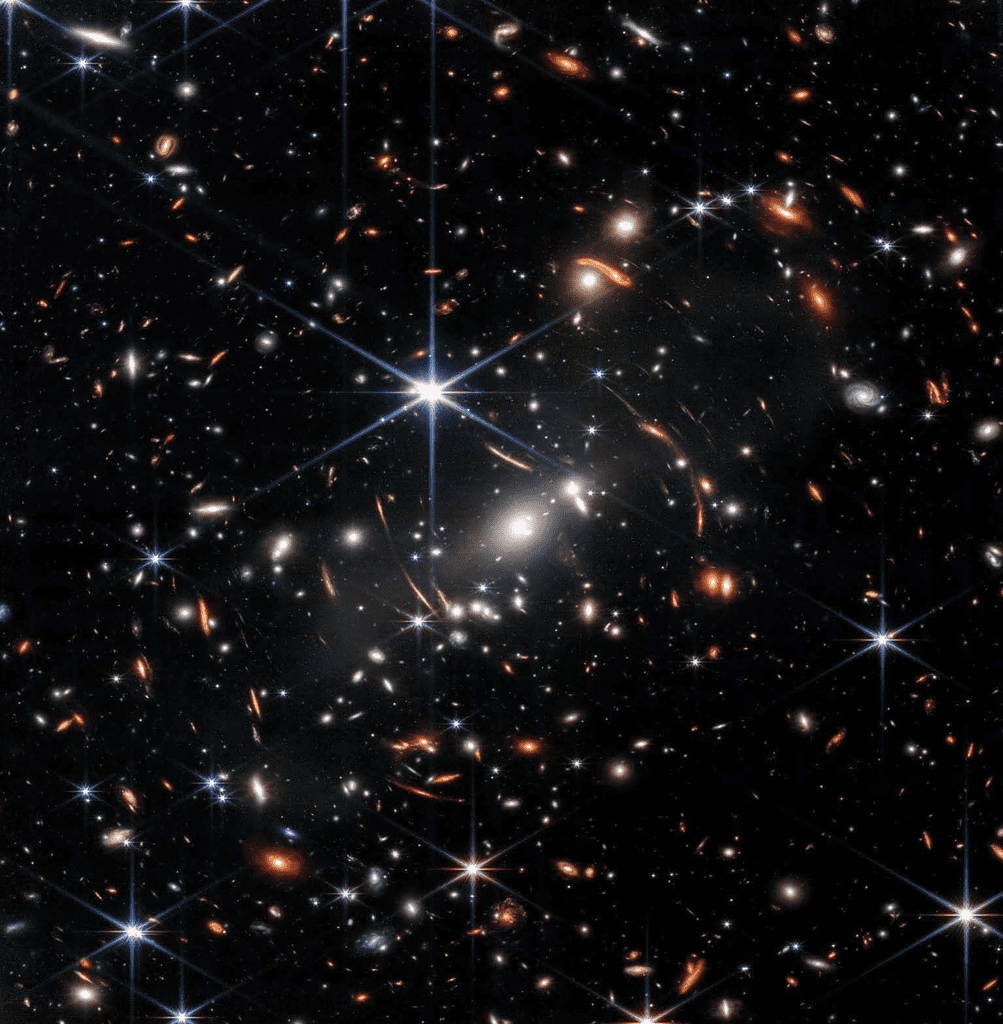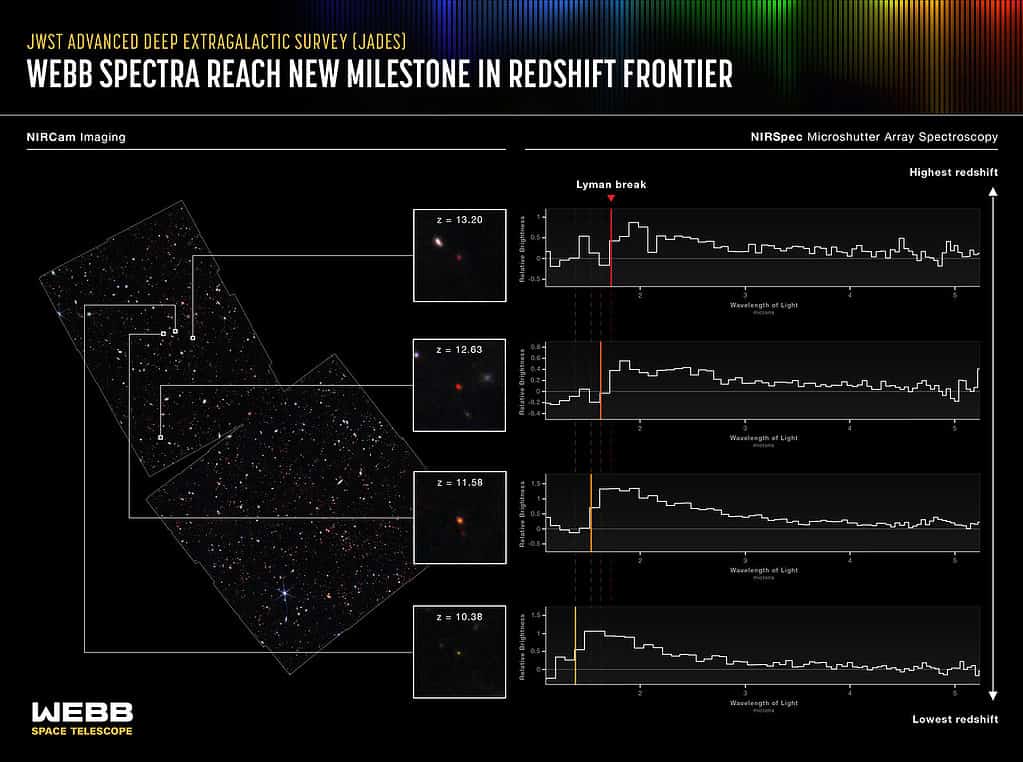Four galaxies that are over 13.4 billion years old were spotted by the JWST, the giant new space telescope. They were formed just 350 million years after the birth of the universe, and proved so controversial that they needed to be double-checked.
“It was crucial to prove that these galaxies do, indeed, inhabit the early universe. It’s very possible for closer galaxies to masquerade as very distant galaxies,” Emma Curtis-Lake, a co-author of one of the new studies and an astronomer at the University of Hertfordshire in England, said in a statement. But the mystery of these galaxies only gets bigger.

When researchers are looking at something that’s very far away, they’re also looking back in time. If you’re looking at something that’s one light year away, you’re seeing it as it was one year ago, because that’s how long it took light to travel from the object to you. So when you’re looking at something 13.4 billion light years away, you’re seeing what the universe was like very early on in its evolution.
The four ancient galaxies range in age from 460 million years after the Big Bang to 325 million years after the Big Bang. They’re relatively small, with about 108 to 109 times the mass of the Sun worth of stars — several thousands of times smaller than the Milky Way.
But that’s not the weird thing about them. The weird thing is that they exist.
When Charlotte Mason, an astrophysicist at the University of Copenhagen, started looking at a part of the night sky with the JWST, they weren’t expecting to find anything. According to existing models, the patch of the sky would hold just 0.2 galaxies — in other words, just a 20% chance of finding a single galaxy; but they found two. This isn’t the only surprising JWST find.
Overall, since astronomers have been using the JWST, they’ve found 15 galaxies formed within the universe’s first 500 million years. Based on our current understanding of cosmological evolution, dark matter (the bizarre thing that makes up 85% of our universe’s mass) coalesced in halos right after the Big Bang, and these halos had strong enough gravity to draw in gas and eventually collapse to form the first stars. But this theory can’t account for this many old galaxies.
For now, it’s not clear how the new JWST data fits in with these models; it’s still early days for the world’s most powerful telescope, so it’s probably better to wait first and then “Let’s get a bigger population,” says Alice Shapley of the University of California, Los Angeles, for Science. “Then it will be time to look at theories.”
“It is hard to understand galaxies without understanding the initial periods of their development,” adds astronomer and co-author Sandro Tacchella from the University of Cambridge in the United Kingdom explained. “Much as with humans, so much of what happens later depends on the impact of these early generations of stars. So many questions about galaxies have been waiting for the transformative opportunity of Webb, and we’re thrilled to be able to play a part in revealing this story.”

In the meantime, this is also a remarkable technical achievement. The oldest and farthest galaxies are also the faintest, so studying them in detail was virtually impossible before the JWST was launched.
“These are by far the faintest infrared spectra ever taken,” said astronomer and co-author Stefano Carniani from Scuola Normale Superiore in Italy. “They reveal what we hoped to see: a precise measurement of the cutoff wavelength of light due to the scattering of intergalactic hydrogen.”
The spectrum of observed light can help researchers understand how old a celestial object is. The universe is constantly expanding, and as it expands, it stretches out light’s wavelength — something called ‘redshift’. Light from these youngest galaxies has been stretched out by a factor of 14, and researchers look for faint galaxies whose light cuts off after a critical wavelength.
“These results are the culmination of why the NIRCam and NIRSpec teams joined together to execute this observing program,” shared co-author Marcia Rieke, NIRCam principal investigator, of the University of Arizona in Tucson.
It’s striking that it’s only been a few months since the JWST was launched and it’s already producing revolutionary results.
Granted, we need more data before we can understand that data, but for now, the results really are awesome.
“For the first time, we have discovered galaxies only 350 million years after the big bang, and we can be absolutely confident of their fantastic distances,” shared co-author Brant Robertson from the University of California Santa Cruz, a member of the NIRCam science team. “To find these early galaxies in such stunningly beautiful images is a special experience.”


